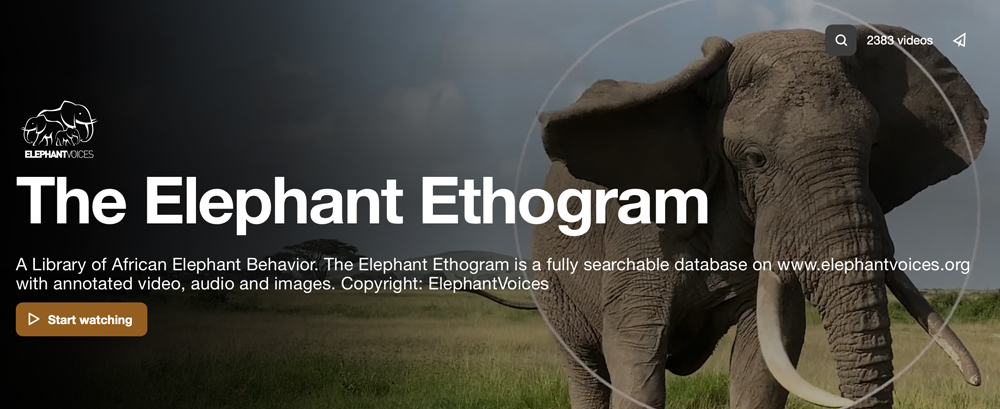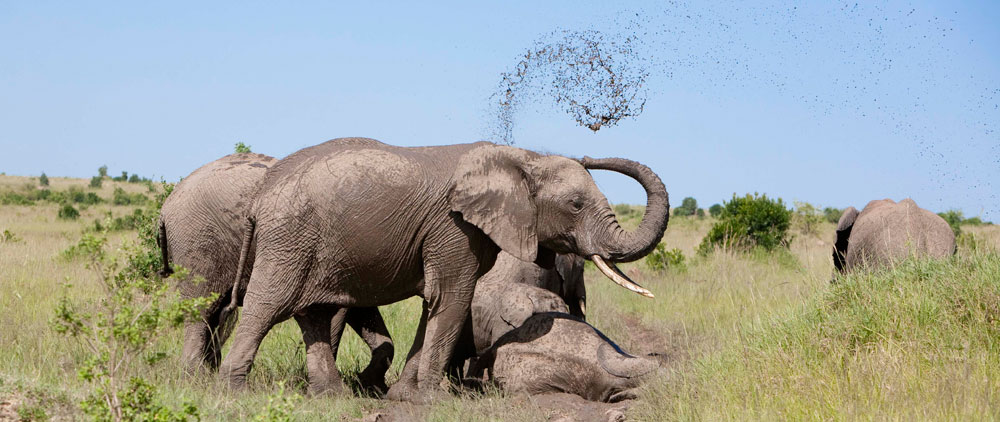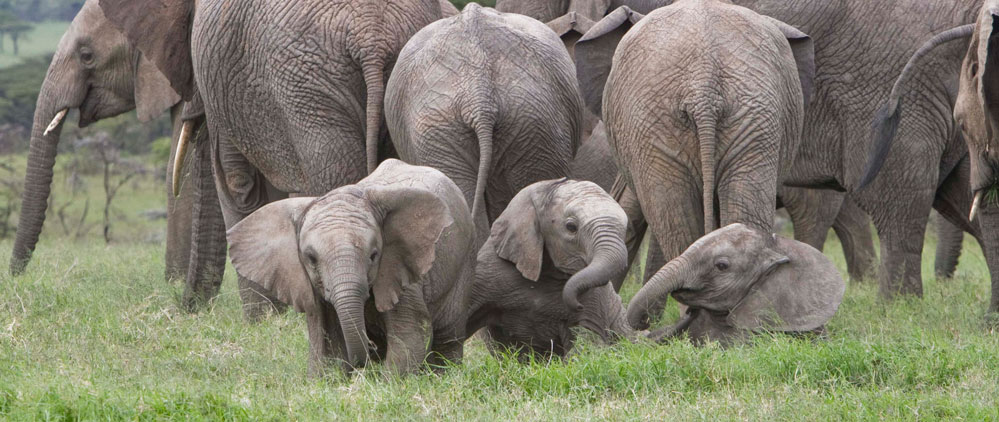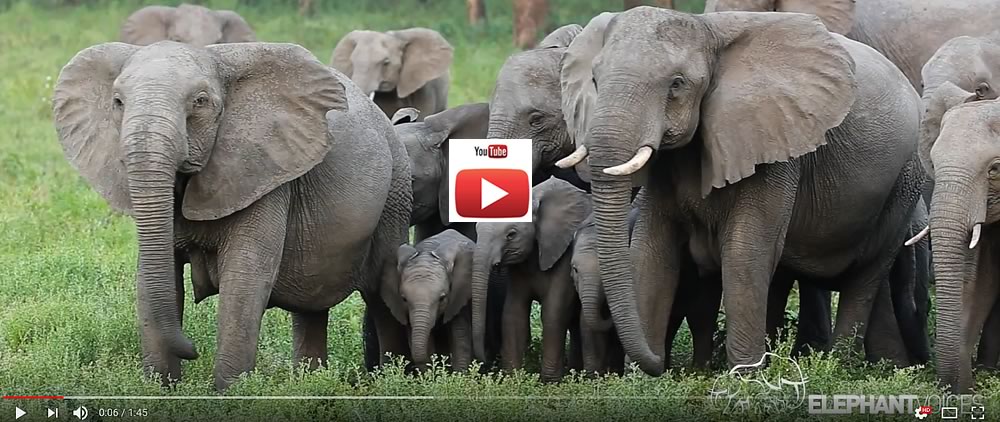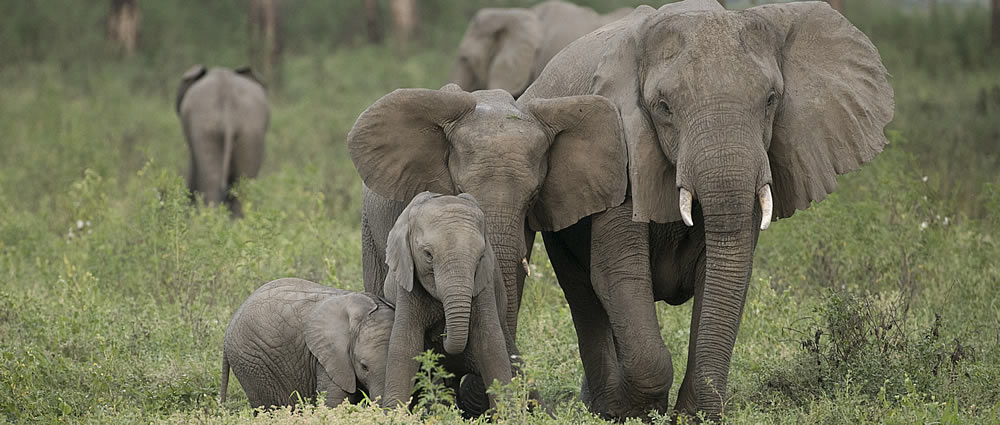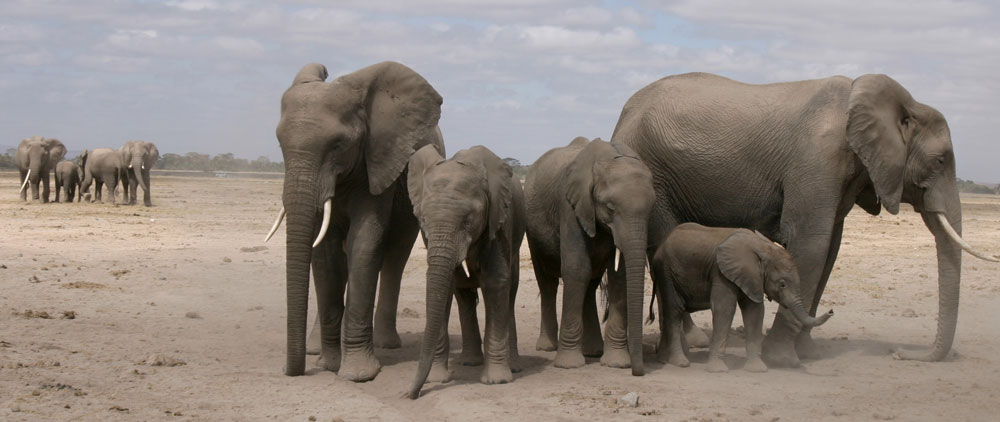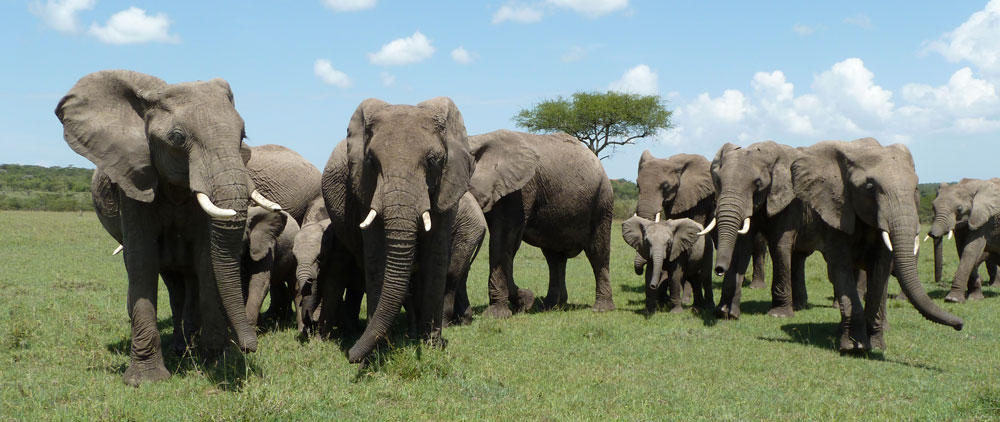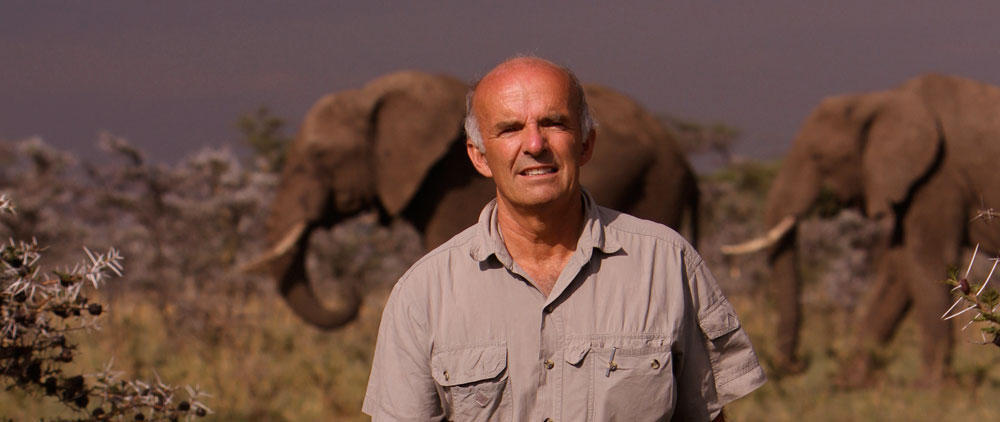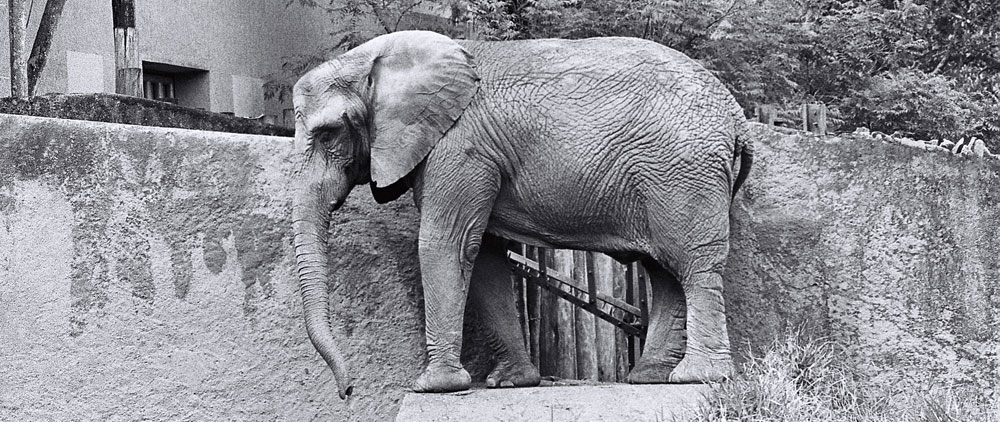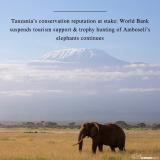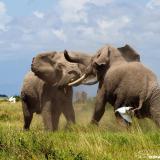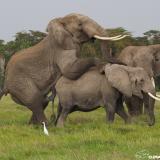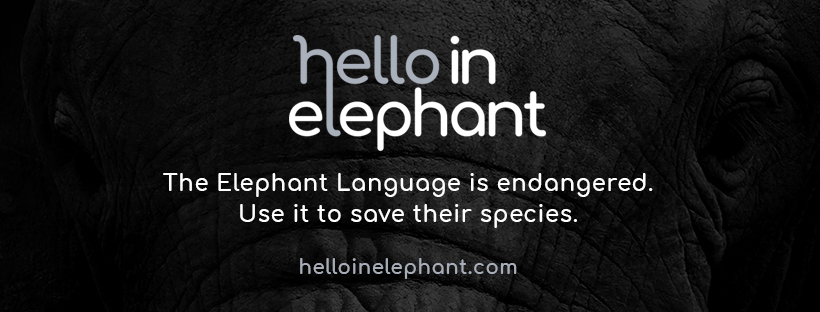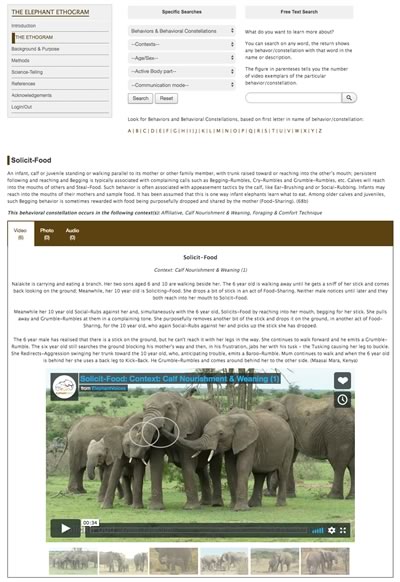elephant vocalization
-
Acoustic communication
Acoustic (that is, sound) signals are omni directional (i.e. they travel in all directions) and can be broadcast to a large audience of intended and unintended listeners, including those in view and those hidden from view. Being short-lived and deliberate, acoustic signals are useful for giving information about an immediate situation, rather than about a constant state. Through reflection, refraction and absorption, acoustic signals are degraded by the environment in ways that are often very much greater for high frequency sounds than for very low frequency sounds. Elephants are specialists in the production of low frequency sound and in the use of long-distance communication. Check out some good examples on acoustic communication by elephants in article "What Elephant Calls Mean: A User's Guide" published by National Geographic in 2014, based on the work of ElephantVoices.
The range of sounds elephants produce
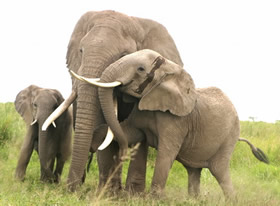 African elephants produce a broad range of sounds from very low frequency Rumbles to higher frequency Snorts, Barks, Roars, Cries and other idiosyncratic sounds. The most frequently used type of call is the very low frequency Rumble. You can search for, listen to and read about numerous calls and other sounds made by elephants on The Elephant Ethogram: A
African elephants produce a broad range of sounds from very low frequency Rumbles to higher frequency Snorts, Barks, Roars, Cries and other idiosyncratic sounds. The most frequently used type of call is the very low frequency Rumble. You can search for, listen to and read about numerous calls and other sounds made by elephants on The Elephant Ethogram: A -
ElephantVoices eNewsletter August 2017 - Say Hello in Elephant!
Dear Friend of ElephantVoices,
For the first time you can Speak Elephant with your friends. You can share your message in a pretty cool way:-).
Together with the David Sheldrick Wildlife Trust, we’re launching Say Hello in Elephant to raise awareness and to showcase elephant communication. Our goal is to reach far and wide - during World Elephant Day, 12th August, and beyond.
In the press release about this campaign ElephantVoices’ Joyce Poole states: "Elephants are awe-inspiring and every moment in their company brings joy. Unlocking their rich emotive communication and gaining deeper insight into their world is fascinating. Yet, elephants and their habitats are under assault, and we urgently need to change hearts and minds.”
Say Hello in Elephant provides a little window into the complex communication of elephants. If you want to learn more, check out our elephant calls database. We are currently working on a major expansion of all our elephant behavior databases, and look forward to show you more during the coming year.
More than ever we need your help to inspire people to do their utmost to stop the ivory trade and to ensure a future with space for elephants. Please consider supporting the work of
-
ElephantVoices Mission
"To inspire wonder in the intelligence, complexity and voices of elephants,
and to secure a kinder future for them."Our goals are to advance the study of elephant cognition, communication and social behavior, and to promote the scientifically sound and ethical management and care of elephants. We accomplish these through research, conservation, advocacy and the sharing of knowledge.
-
Introduction
The Elephant Ethogram is a uniquely detailed catalogue, or library, of the behavior and communication of African savanna elephants (Loxodonta africana). It is based on decades of ElephantVoices behavioral studies, photographs, and audio and video recordings, the referenced research of other elephant biologists, as well as professional and amateur footage made available to ElephantVoices. You can read more about how elephants communicate within this section of elephantvoices.org. The Elephant Ethogram was launched in May 2021.
 The Elephant Ethogram consists of written and referenced descriptions, video examples, photographic illustrations and, where relevant, audio recordings, of 322 Behaviors, 103 Behavioral Constellations and 23 Behavioral Contexts. There are close to 3,000 media files in the fully searchable Elephant Ethogram including 2,408 video clips (18 August 2021).
The Elephant Ethogram consists of written and referenced descriptions, video examples, photographic illustrations and, where relevant, audio recordings, of 322 Behaviors, 103 Behavioral Constellations and 23 Behavioral Contexts. There are close to 3,000 media files in the fully searchable Elephant Ethogram including 2,408 video clips (18 August 2021).The concept and structural design of The Elephant Ethogram was developed by Joyce Poole and Petter Granli of ElephantVoices. Programming and database maintenance is handled by Derrick Joel, Nairobi, Kenya in collaboration with Petter. The Elephant Ethogram is coded in open source software PhP and MySQL in Joomla! CMS, and is hosted on Cisco servers as a section of elephantvoices.org. Video and audio is hosted on Vimeo and SoundCloud, respectively.
What is an Ethogram?
An ethogram is a comprehensive list, inventory, catalogue or description
-
The Elephant Ethogram
ElephantVoices is working on a major initiative to document the repertoire of African savannah elephant behavior (Loxodonta africana). The Elephant Ethogram represents a unique and comprehensive source of information about elephant behaviour and communication, based on ElephantVoices' decades of behavioural study, our multimedia photographic and acoustic collections, as well as footage collected during the filming of documentaries from the Maasai Mara, Kenya, and Gorongosa National Park, Mozambique. The Elephant Ethogram describes and preserves the gestural and acoustic "language" and behaviour of a species whose way of life, and very existence, is threatened by human greed and expansion.
The first version of The Elephant Ethogram was made available on ElephantVoices.org in April 2021.
Purpose & Objectives
The Elephant Ethogram documents in a unique, user-friendly and fully searchable database, the complex and diverse communication and behavior of African elephants for scientists and others to study, compare and share. As a repository of exemplars of elephant behaviour, The Elephant Ethogram aims to:
- preserve the gestural and acoustic repertoire, or "language," of African savannah elephants;
- be a valuable resource and reference for scientific study;
- be a repository of rare elephant behaviors and those evolving through social learning in response to rapidly increasing anthropogenic threats;
- inspire increased interest in elephant behavior,


